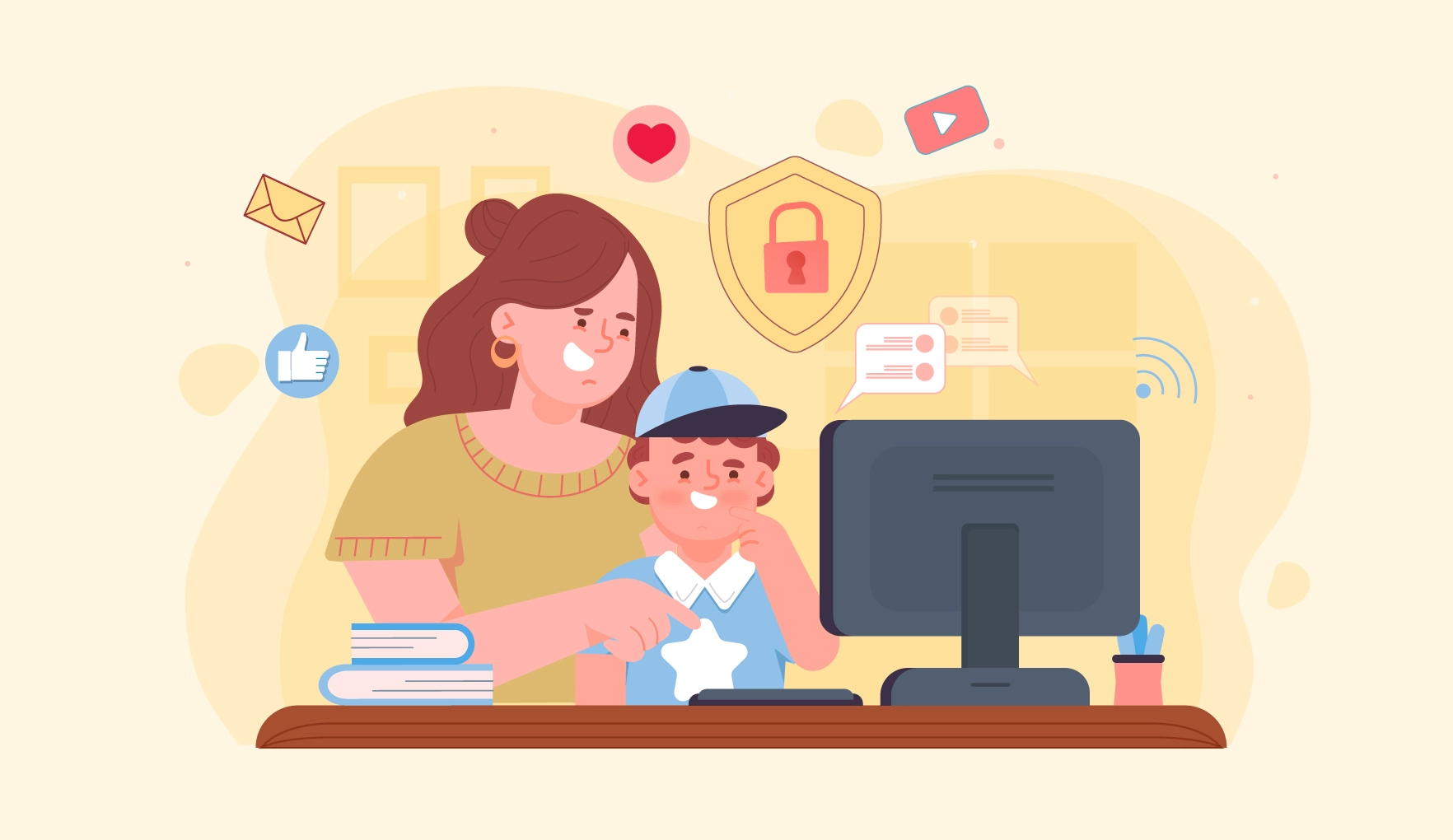12 Internet Safety Tips For Kids and Teens

Children and teenagers are becoming increasingly active in the digital world as we live in a technologically driven culture. Although many instructive and enjoyable resources are available on the Internet, risks are also involved.
Children’s safety is important to keep them protected from online hackers. In this blog, we’ll go over 12 crucial internet safety pointers for kids and teenagers in this lengthy lesson to help them responsibly use the Internet.
Have a Face-to-Face Talk
If all you do is create locks and passwords without spending any time explaining to your children what is and isn’t proper, they won’t know the difference and might not make wise decisions when faced with unfamiliar circumstances. Schedule some time for a discussion on everything related to being online, including personal safety, online advertising, cybersecurity, and rules that seem unfair to them. They might even resist the rules.
Allow Them to Guide You
Teens like to discuss their favorite services and apps. They love to showcase their skills and abilities using these applications. Asking your children what apps they use and what they enjoy about them will help you start the conversation.
Use Digital Tools to Protect Your Children
Most digital platforms and gadgets come with capabilities designed specifically for parental supervision and management. By learning about and utilizing these resources, you may establish boundaries for your children at a critical age and gradually remove them as they become older and more responsible.
Brush Up on Device-Based Tools
All Mac and Windows PCs, Amazon devices, and Apple and Android phones have built-in settings and family account configurations. These technologies allow you to set remote restrictions on your child’s internet browsing habits, app usage, and device usage time.
Study and Follow Applications
Check online to discover if your children’s apps include built-in monitoring or parental controls. ConnectSafely offers quick guides to the majority of well-known apps that teenagers and children use. The instructions cover all of the accessible tools and settings.
Set the Privacy Settings on the Internet
Find out how your children now limit who can view their posts and information by adjusting privacy and security options in their social media apps. Almost all apps that let users post publicly also include private post settings, giving users discretion over who can view what they share.
You can limit who you follow on social networking apps as well. Although your children may already be familiar with limiting their number of followers, now would be a good time to find out about the privacy protection settings they utilize and collaborate with them to set up even more. You may urge them to consider the consequences of opening settings by posing questions such as, “So does that mean that everyone could see this?”
Protect their Gadgets and Accounts
Remember to bring up security and kid-friendly internet tips. Everyone needs biometric controls, such as fingerprint or facial recognition, and/or strong, secure passwords. PINs and multi-factor authentication are two of the finest defenses against hackers for devices and accounts. Check out additional online security places like ConnectSafely’s Guide to Secure Keys to learn more.
Assist them in Gaining Charge of their Information
Kids love to share information, so talk with them about what they upload and how important it is to keep personal information secure and private so that it won’t hack into your privacy. After all, you never know who might see what you post; hence, kid-friendly internet tips are a must-share.
Avoid Being a Victim of Bullying
Discuss with your children about Child Security and safe internet practices, how to behave and be treated nicely on the Internet, how to handle anger, how to treat others, and what to do if they witness someone being cruel to them or another person. Although the penalties for being cruel, spreading rumors, or attacking someone online are typically more ambiguous, the fundamental standards of decency remain the same as they do in the “real” world.
Study them Carefully
Undoubtedly, we see a lot of information surfacing on the Internet. Still, child security and safe internet practices are also important, whether from friends, strangers, or new sources. It is important to consider what you share and how safe your data is. Some individuals, organizations, businesses, and even governments purposefully disseminate misleading information that can be challenging to identify, particularly for young people. Consult the ConnectSafely Guide to Media Literacy for assistance.
Begin the Conversation
As your kids age and show they can use technology responsibly, reconsider regularly using monitoring and supervision tools. In addition, since children are growing older, the talks we suggest are ongoing. You should have regular conversations with them to stay informed about how your children are using technology, discuss potential risks and developments in the field, and reinforce the need for both you and them to practice caution when using connected devices.
Conclusion
Prevention is better than cure, just as sharing the right information with your kids at the right time is important. Teaching the children the benefits of the Internet while reducing hazards by encouraging open communication, offering advice on safe online behavior, and keeping up with the newest technological advancements. Working together to reduce this generation of informed and accountable digital citizens.
Take command of your child’s cyber safety education! Make your children aware of the tools they need to handle the digital world. Use these 12 internet safety tips, communicate honestly, and be informed. To protect them in the wide Internet world, begin cultivating a safe online environment now.


 3.9/5.0
3.9/5.0 4.0/5.0
4.0/5.0